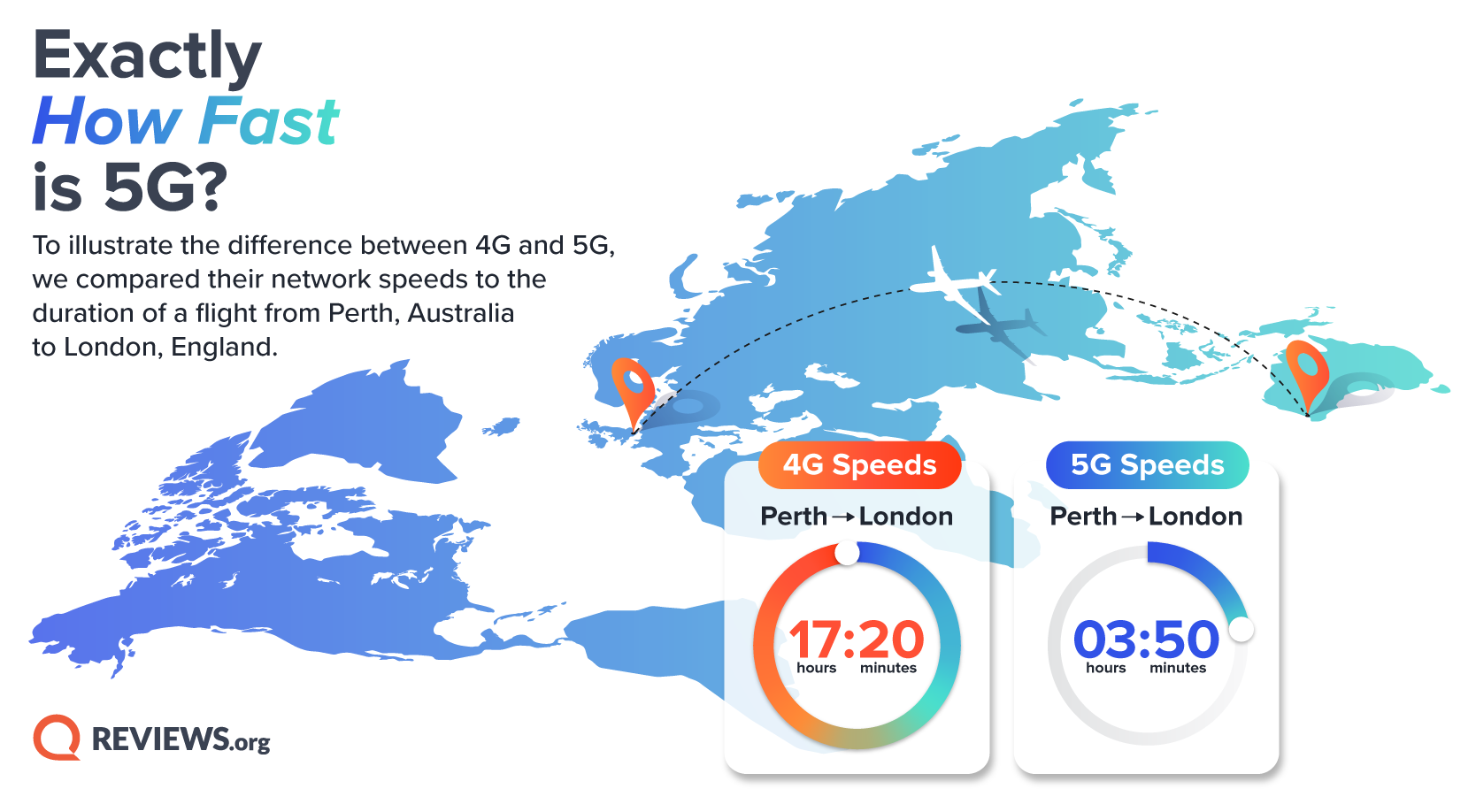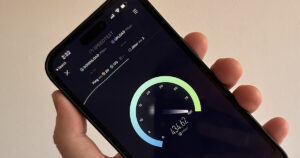Now that 5G is available in Australia, how much faster is it than 4G?
5G speeds in Australia: How much faster is it?
5G download speeds
Now that Telstra, Optus and Vodafone all offer widespread 5G in Australia, we have a better idea of what kind of speeds you expect on the new network technology. Provided you have 5G coverage in your area with your provider, you should see much faster download speeds on 5G than you previously experienced on 4G.
According to Open Signal's most recent report, mobile 5G download speeds in Australia averaged 183.8Mbps in the first quarter of 2023. Here's the average 5G download speeds each provider delivered over the first quarter of 2023:
- Optus: 229.6Mbps
- Telstra: 215Mbps
- Vodafone: 106.8Mbps
5G upload speeds
Across the same period, Open Signal tracked 5G upload speeds in Australia. The results were less promising. While the maximum theoretical upload speed for 5G technology is 10Gbps, Australians experienced roughly 0.1% of those potential upload speeds. 5G upload speeds averaged 15.56Mbps in Q1 of 2023. If you compare 5G and NBN upload speeds, 5G is performing somewhere between NBN Basic II 25 (8Mbps average) and NBN Standard 50 (18Mbps average).
Here's how each network performed for 5G upload speeds in Open Signal's report:
- Telstra: 17Mbps
- Optus: 15.3Mbps
- Vodafone: 13.8Mbps
Maximum 5G speeds
While the theoretical maximum of 5G is a whopping 20Gbps, roughly five times as fast as 4G in ideal conditions with the right technology. The reality in Australia isn't quite as fast, with telcos only willing to advertise potential speeds between 200 and 300Mbps on Australian 5G networks.
Optus 5G speeds
Optus doesn't disclose any information about expected 5G speeds or coverage for mobile plans. But according to Open Signal's report, it had the fastest 5G download speeds on average in Q1 of 2023 at 229.6Mbps. Optus 5G upload speeds averaged 15.3Mbps.
Here's a quick look at some of the most popular 5G mobile plans on the Optus network.
5G speed test
If you already have a 5G device and plan and want to test your connection speed, you can use the tool below. Just make sure your device is showing 5G (typically in the top-right corner of the screen where it would normally say 4G or LTE.) then click the Start Speed Test button below.
Many telcos are working hard to build 5G networks across Australia, and soon we will be able to download, stream, and surf at speeds previously unimaginable.
But how fast are we talking? We could tell you that you can currently expect a 4.5x speed bump from 4G to 5G, and that the difference is up to about 200Mbps on average. We could say that this is just the tip of the iceberg (and that my personal best 5G speed is 808Mbps).
But It can be difficult to visualise a concept like download speeds and after a while, the big numbers can seem meaningless. So instead, how about we apply the speed improvements of 5G to something we all love to hate: long-haul flights.
As you know, Australians can now take a direct flight from Perth to London, but it takes a back-breaking 17 hours and 20 minutes to complete this journey. What if the advancement in mobile internet speeds were matched by advancements in aviation? How long would this flight take?

What this illustrates is that the jump from 4G to 5G is not a minor boost. A decade ago it seemed impossible to imagine watching TV and movies on our phones, and now it is something that lots of people do every day. New 5G networks will open up our gadgets to a range of new possibilities, and while it is hard to imagine exactly the kinds of things we’ll be doing in a decade from now, our 5G future makes it possible.
Methodology: To compare flight durations to cellular network speeds, we sourced average download speeds from 4G and 5G networks from Opensignal. We then converted the difference in speeds between networks to a non-stop flight from Perth to London (17:20 duration).
Want to know more about how you can get in the fast lane?
Related Articles





